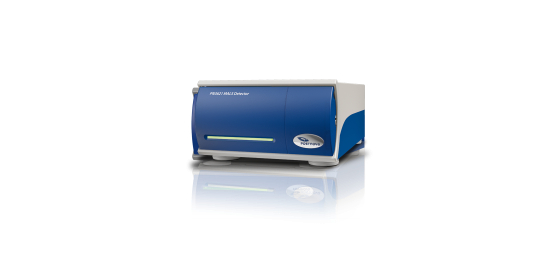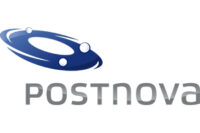Postnova Analytics – FFF Modules – PN3000 Detectors
-
SINGAPORE
DKSH Singapore Pte Ltd
625 Lorong 4 Toa Payoh, #03-00
319519 Singapore
Singapore
Available Models
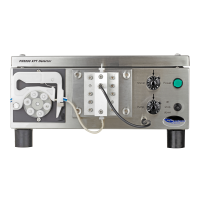
The Postnova PN3000 XPT Online Particle Size Detectoris a new type of detection system, which combines optical particle sizing with advanced CCD detection and fast image analysis. The system is ideal for coupling to FFF and enables the online identification and characterization of microparticles. Any kind of FFF separation system, such as Splitt, Centrifugal, Flow or Thermal FFF can be hyphenated to the PN3000 XPT. The detector employs a special inert glass flow cell, illuminated by a LED light source coupled with sensitive CCD detection for the optical identification and characterization of any microparticle from approximate 1 µm up to 300 µm. Thus, in combination with a FFF separation system, even the most complex particle systems can be characterized. The particle size and number, size distribution and shape can be easily obtained for each fraction. This makes the technology ideal for use in Pharmaceutical Technology, Biotechnology, Chemical and Environmental applications.

The new PN3150 deflection type differential Refractive Index Detector is a detection system which offers the highest sensitivity combined with exceptional baseline stability at the same time. Thus the system is ideally suited for „flow sensitive“ applications such as FFF and GPC. The unit comes in the new Postnova design and has a removable front cover. The manual touch keys combined with the display allows complete control of the detector without the need for any external software system. At the same time, the PN3150 can be easily controlled externally using the integrated Ethernet interface connection port.
Options Flow Cells:
- Z-DET-3150-001 microbore (2.5 µL Cell Volume)
- Z-DET-3150-002 analytical (8.0 µL Cell Volume)
- Z-DET-3150-003 preparative (8.0 µL Cell Volume)
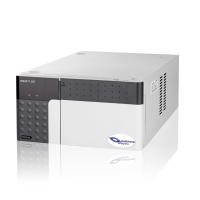
The PN3211 UV Detector provides an exceptional level of sensitivity and stability. As a high sensitive UV detector, the PN3211 has a noise level of 0.5×10-5 AU max., making it to one of most sensitive UV detectors (ASTM Standards).
Options :
- Z-DET-3211-001 Analytical, Peek
- Z-DET-3211-002 Analytical, Stainless Steel
- Z-DET-3211-003 Preparative, Stainless Steel
Detector Lamps
- Z-DL-PN3211 D2-Lamp, Pre-aligned, Longlife
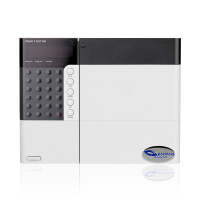
The PN3241 DAD detector provides users with a very high level of sensitivity and stability found in DAD detectors today. The PN3241 attains sensitivity levels approaching the most advanced UV-Vis detectors. With an 8 nm slit width it has a high-sensitivity mode. Using light-source compensation, it offers a noise level of 0.6×10-5 AU, which is comparable to that of traditional UV-VIS detectors.
Options:
Flow Cells
- Z-DET-3241-001 Analytical, Peek
- Z-DET-3241-002 Analytical, Stainless Steel
- Z-DET-3241-003 Preparative, Stainless Steel
Detector Lamps
- Z-DL-PN3241 D2-Lamp, Pre-aligned, Longlife
- Z-DL-PN3241vis Vis-Lamp
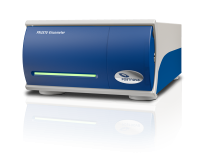
The Postnova PN3310 Viscometer detector is a state-of-the-art intrinsic viscosity detector for Field-Flow Fractionation (FFF) and Size Exclusion Chromatography (GPC/SEC). It is based on the proven Wheatstone-Bridge design for measuring the intrinsic viscosity of macromolecules in solution. The instrument is designed in the modern and compact Postnova FFF detector design.
The Postnova PN3310 Viscometer detector shows an outstanding performance and is equipped with highly sensitive pressure transducers. The special pressure sensor protection system (PSP) automatically avoids critical overpressure on the pressure transducers. The instrument shows excellent baseline stability with extremely low drift and superior signal-to-noise ratio. Up to four analog signals from external detectors (e.g. RI, UV, Fluorescence) can be connected to the PN3310 Viscometer detector. The instrument is fully controlled by the powerful and user-friendly NovaMALS software that can integrate additional detectors such as Multi-Angle Light Scattering (MALS), Refractive Index (RI) and UV Absorbance.
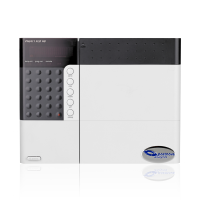
The Postnova PN3411 Fluorescence Detector has an excellent basic performance which offers world-leading sensitivity, excellent ease of maintenance and validation support functions. They support a wide range of applications from conventional analysis to ultra fast analysis.
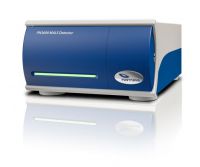
The Postnova PN3609 MALS detector system employs a well selected range of 9 scattering angles and therefore offers a very good economic performance ratio. It does not have the same full range of angles as the high-end model PN3621 MALS, but still has all angles needed to become a reliable, rugged and precise light scattering instrument for all main applications of today’s bio-, nano- and polymer laboratories. All angles in the PN3609 are carefully selected in such a way that the majority of the applications is easily possible and that the resulting molar mass and size determination yields precise and stable results. Because of its more restricted number of angles, the PN3609 MALS system may not be eligible for all high-end nanotech and polymer applications, especially for molar masses above 10E7 Da and sizes above 250 nm. However, because it employs 9 full angles, the PN3609 has a superior performance compared to any other mid range MALS detector system, thus allowing high quality data and angular fits providing fully scientific and meaningful results for smaller to mid size samples.
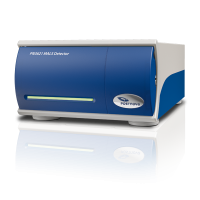
The Postnova PN3621 MALS detector system employs full 21 angles and has the broadest angular range of any commercial light scattering instrument available today. These 21 angles are crucial to fulfil the high requirements set for accuracy for measuring complex particular samples, ensuring the highest precision in molecular weight and particle size determination. With 21 angles the PN3621 can achieve the highest quality data fit for the most scientifically meaningful results in your laboratory, especially for high molar mass polymers and large particles.
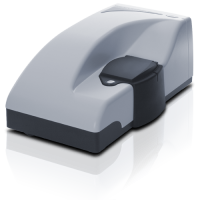
The advanced detector hardware allows operation in Online Mode connected to FFF with a special flow cell for continuous DLS and also in Offline Mode using standard cuvette cells as standalone detector for batch DLS measurements. The system allows input of up to two additional external FFF detectors (e.g. RI, UV, FLD, etc.) and automated operation when used together with the PN9020 Interface Box for remote start capability. The Zetasizer Nano is connected as the last detector inline. Switch between flow and batch mode measurements is achieved by simply changing the cuvette within seconds. The system will automatically identify eluted FFF peaks without any calibration, expressed as size or molecular mass. Software allows overlay of RI, UV and FLD traces with Rh data and also static light scattering intensity signal. Using the Zetasizer Nano there is no need to rely on size or molecular weight calibration standards for FFF anymore.
High Sensitivity Online Dynamic Light Scattering Detector, special customized for use connected to Field-Flow Fractionation (AF2000, CF2000 and TF2000).
Key Industries
- Biopharmaceutical and Biotechnology
- Cosmetics & Personal Care
- Education & Academics
- Food & Beverage
- Pharmaceutical
- Polymers, Plastics and Rubbers
- Powders & Pigments / Coating
Brand
Postnova Analytics is the inventor and leading supplier of Field-Flow Fractionation systems for the main growth markets of biopharma, polymers, materials, nanotech and environmental. Postnova has a unique and patented modular FFF – Light Scattering Platform, which allows flexible adaption to various market and applications. The key product portfolio comprises Flow FFF, Centrifugal FFF, Thermal FFF and MALS and DLS Light Scattering. Postnova has seen significant growth rates over many years and has become an established provider of scientific instruments especially in the nanotechnology, polymer and biopharmaceutical markets.
Download now
